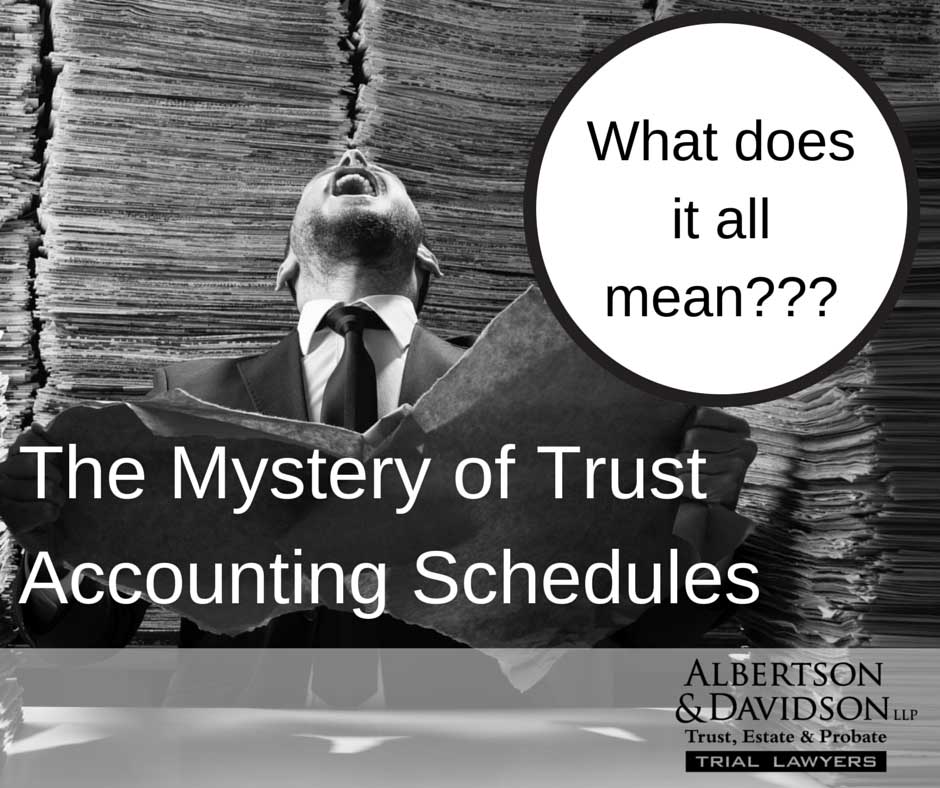
The best part of any Trust accounting are the schedules because that’s were the information you need to know is all laid out in detail—or not. A Trust account must have a summary page at the front that lists the bulk numbers for things like assets on hand at the start of the accounting period, income received, gains on sale, disbursements (meaning payment of expenses), distributions, loss on sale, and assets on hand at the end of the accounting period.
While those bulk numbers are helpful from an overall viewpoint, they do not explain how the numbers came about. For example, if the Trust states total disbursements of $100,000, you would want to know what expenses were paid that come to a total of $100,000.
And disbursements are typically where abuse is found. By knowing what was spent you can issue subpoenas to verify that the expenses were actually paid. Same with assets on hand at the start of the accounting. By knowing what was present when the Trustee started, you can issue subpoenas to independently verify the information reported.
Sometimes information may be known by you but NOT included on an accounting. That’s useful to know also. If you know the decedent owned a house, but the house is not included on the Trust accounting, that tells you something. Either an asset is being hidden or the Trustee deems the asset not a part of the Trust for some reason. In any event, you can narrow the focus of your search based on what is, or what is not, reported in the accounting. From there, you can issue the subpoenas and do the depositions you need to attack the problems identified from the accounting.
The Trust accounting schedules essentially gives you a roadmap that you can follow to unravel the mysteries of the Trust administration.
